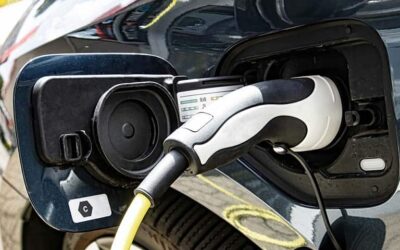In a typical school year, more than 20 million students embark on the daily journey to school, collectively making over seven billion trips. Yet, the vast majority of these journeys are propelled by polluting diesel fuel, with children from underserved communities bearing the brunt of the resulting emissions.
The switch from diesel to electric school buses represents not just a change in transportation, but a shift towards safeguarding our children’s health and securing a cleaner future for generations to come.
The Perils of Diesel School Buses
The dangers posed by diesel school buses are multifaceted and profound. The exhaust emitted by these vehicles contains harmful pollutants that endanger our children’s physical health and cognitive development. From heightened risks of cancer and asthma to negative impacts on academic progress, the toll is significant.
Moreover, diesel-powered buses contribute substantially to greenhouse gas emissions, exacerbating the threat of climate change. Alarmingly, communities of color, low-income households, and students with disabilities are disproportionately affected due to higher on-road air pollution and increased reliance on school bus transportation.
Did you know we have a whole series on electric school buses? In this series we take a deep dive into everything school districts need to know before and during purchasing and installing EV chargers for their school buses. Click here to read the full series.
Enter Electric School Buses
The advent of electric school buses heralds a transformative solution to these pressing challenges. With zero tailpipe emissions, these buses drastically reduce students’ exposure to the perils of diesel exhaust pollution. Not only are they environmentally friendly, but they also offer significant cost savings on operational expenditures, potentially saving up to $6,000 annually compared to their diesel counterparts.
The widespread adoption of electric school buses is not a distant dream but a reality unfolding across the nation. These buses are successfully operating in diverse climates and communities, thanks in part to record federal and state funding initiatives.
The Imperative for Equity
While the benefits of electric school buses are clear, the transition must be equitable. Decades of discriminatory policies have disproportionately burdened communities of color and low-income areas with toxic air pollution. An equitable transition ensures that these communities are prioritized, receiving the health and environmental advantages of electric buses first.
Seizing the Opportunity
Electric school buses offer a multitude of benefits beyond cleaner air and reduced emissions. They contribute to improved student health, enhanced academic performance, and a more resilient electric grid. Moreover, by creating thousands of well-paying jobs and stimulating local economies, they foster community prosperity.
With historic levels of funding and financing available, including initiatives like the EPA’s Clean School Bus Program, the momentum for electric school buses is palpable. It’s a pivotal moment—an opportunity to steer towards a future where every student enjoys a clean, healthy ride to and from school.
Implementing Electric Buses with Apogee Charging Solutions
The shift from diesel to electric school buses is not just about transportation—it’s about safeguarding our children’s health, mitigating climate change, and advancing equity. As we embrace this electric school bus revolution, we pave the way for a safer, cleaner, and more equitable future for all. The time to act is now.
Contact Apogee Charging Solutions to learn how to create a safer and cleaner environment for students by calling 484-816-2076, email [email protected], or scheduling a call that fits your needs by clicking the button below.








0 Comments